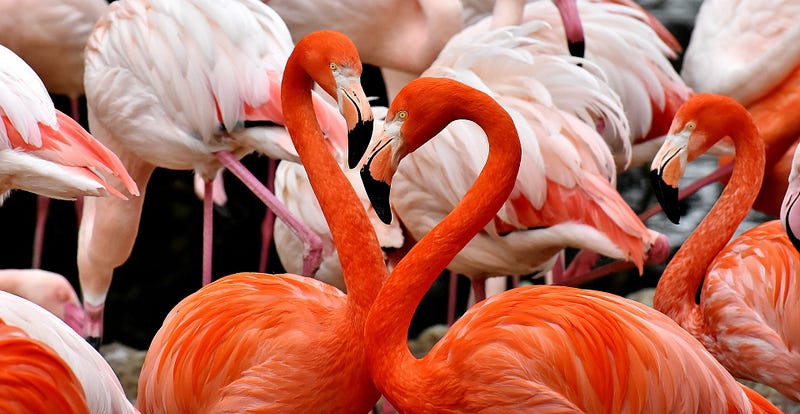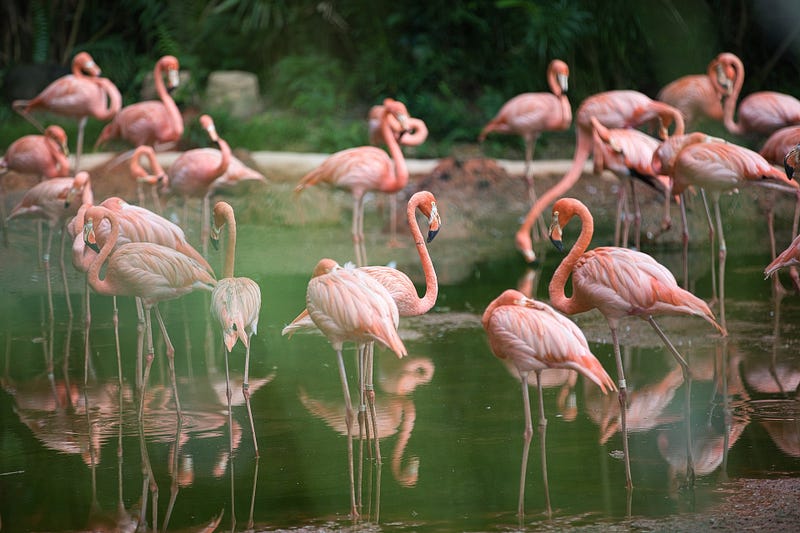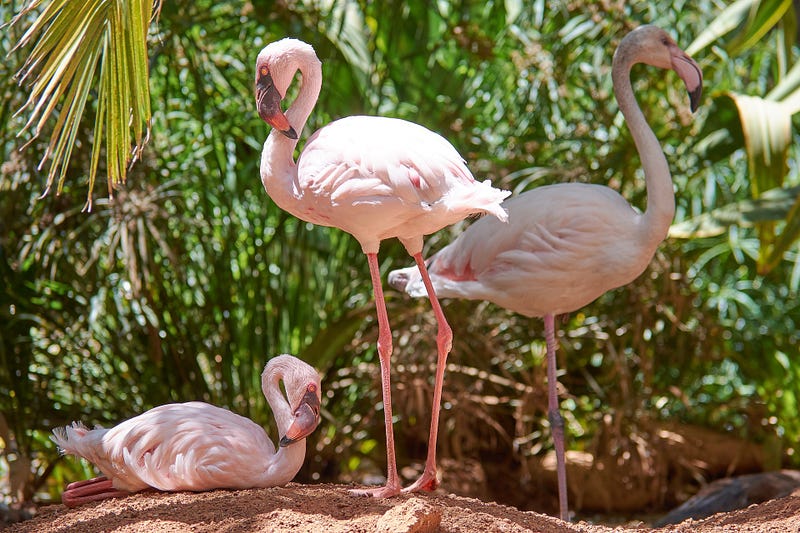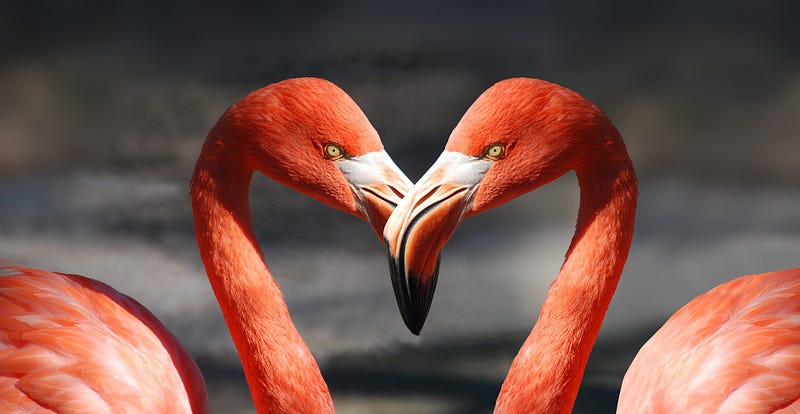Why Are Flamingos Pink? Unveiling the Colorful Mystery
Written on
Chapter 1: The Enigma of Flamingos
Have you ever wondered why flamingos are pink? This question has piqued the curiosity of many, especially during visits to zoos or while watching documentaries about wildlife. The answer might astonish even the most ardent fans of these delightful birds.

[Photo: Nicky ??????? from Pixabay]
Before delving into the reasons for their pink coloration, let’s explore some intriguing aspects of these fascinating creatures. Despite their iconic appearance, there's still much we don't fully understand. Researchers have struggled to explain even simple behaviors, like their propensity to stand on one leg. Some believe this posture helps them conserve heat in the water, while others think it's simply a resting position.
Flamingos are part of the monotypic order Flamingo (Phoenicopteriformes) and are known for their strong social bonds and loyalty. They typically congregate in large groups and engage in communal courtship displays. Additionally, flamingos exemplify the significance of nurturing; when searching for food, they leave their chicks under the watchful eye of other adults. In times of danger, these birds unite as a single entity, significantly enhancing their survival odds.

[Photo: Alexa from Pixabay]
Both male and female flamingos appear nearly identical, with an average weight of around 3 kilograms. Their distinctive beaks allow them to construct nests using mud, and they utilize specialized plates in their beaks to filter small crustaceans, mollusks, insects, their larvae, and aquatic plants. They thrive in shallow salt lakes, muddy bays, lagoons, and mangrove swamps across Africa, Asia, and Europe.
In the following sections, we will uncover the mystery of why flamingos are pink, along with some lesser-known, fascinating facts about these birds.

[Photo: Myo Min Kyaw from Pixabay]
Are Flamingos Born Pink?
When discussing flamingos, their striking pink color is often a focal point. However, many may be surprised to learn that flamingo chicks actually hatch white. Over time, their feathers transition from gray to pink, with the intensity of the pink shade peaking during mating season. So, what causes this vibrant coloration? The answer lies in their diet, specifically foods rich in carotenoids.

[Photo: Roy Buri from Pixabay]
Carotenoids are natural pigments responsible for the yellow, orange, and red hues seen in various plants. These pigments are abundant in algae, which serve as a primary food source for numerous aquatic species; crustaceans, for instance, accumulate these pigments, resulting in their vivid coloration. Flamingos, along with red ibises and salmon, derive their beautiful pink hue from consuming these colorful creatures.
Why Are Flamingos Pink?
While their diet plays a crucial role in their coloration, there’s more to the story. Flamingos also produce an oily secretion from their skin glands, which are unique among birds. They use their beaks to apply this pigment-rich oil onto their feathers, further enhancing their pink appearance. This natural "makeup" becomes even more pronounced during the breeding season.

[Photo: Stefan Schweihofer from Pixabay]
Interestingly, the color of a flamingo can sometimes indicate its social status. Wildlife researchers suggest that flamingos in committed pairs may intentionally avoid brightening their plumage, signaling to others that they are already taken. Furthermore, flamingos display their vibrant pink feathers when they are well-nourished, while those that are sick or underfed may appear pale. However, exceptions exist for breeding individuals, whose food sources might not be as pigment-rich.
Fascinating Facts About Flamingos
There are six species of flamingos, including the pink flamingo, little flamingo, Chilean flamingo, short-eared flamingo, Andean flamingo, and crimson flamingo. Adult flamingos are proficient flyers, while younger ones are adept swimmers. These birds are monogamous and often mate for life. Notably, flamingos are not native to Australia and typically live for 30 to 40 years. The term “flamingo” originates from the Latin word flamma, which translates to “flame.”
Chapter 2: Additional Insights into Flamingos
The first video, "Why Are Flamingos Pink? | The Science of Colors! | SciShow Kids," explores the scientific principles behind the coloration of flamingos and their unique adaptations in nature.
The second video, "Why Flamingos are Pink: A Colorful Nature Mystery Unraveled," delves deeper into the mystery of flamingos’ vibrant hues and their dietary habits that contribute to their iconic color.
Cool that you made it to the end of this article! If you enjoyed reading it, I would appreciate your support through claps or even a follow. A tip would also be greatly appreciated. Thank you!